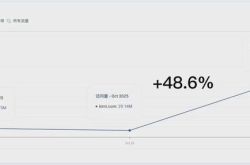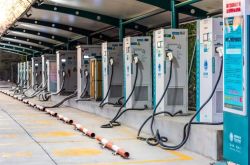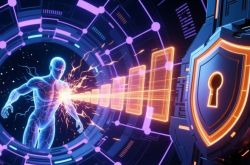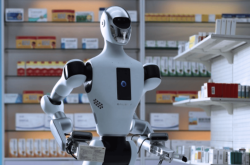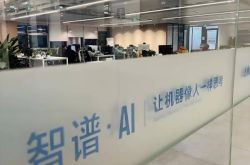OpenAI Initiates Order Lockdown Strategy, Altman Joins Double 11 Shopping Spree
![]() 10/10 2025
10/10 2025
![]() 484
484
During the bustling Double 11 period, OpenAI is truly working overtime, demonstrating unparalleled diligence. Founder Sam Altman has even embarked on a cosmic journey, making appearances in a myriad of mind-bending scenarios.
Altman himself becomes the inaugural 'victim' of OpenAI's Sora2 video generation model—the first to seamlessly integrate AI-generated audio with corresponding visuals. Netizens have whimsically placed him in countless fantastical settings, engaging in bewildering antics.
Cybernetic ascension, indeed a terrifying concept.

Image generated by Sora2
In the real world, Altman and his OpenAI have been equally active. In just half a month, they have forged partnerships with several enterprises along the AI industry chain and set OpenAI's valuation at a staggering $500 billion, making it the strongest unicorn in history.
This proactive capital maneuvering may stem from two plausible explanations: either AI is on the cusp of entering its next rapid growth phase, necessitating a preemptive strategic deployment of massive computing power; or OpenAI is grappling with unprecedented levels of anxiety.
A Global Computing Power Lockdown
Over the past two months, OpenAI has embarked on a frenzied expansion spree, causing multiple companies' stock prices to soar. Specifically, these agreements encompass partnerships with chip giant Nvidia worth up to $500 billion, AMD up to $300 billion, and cloud service provider Oracle up to $300 billion, along with a data center group.
The deal with CoreWeave exceeds $22 billion, aiming to provide OpenAI with over 20 gigawatts (GW) of computing power for the next decade—equivalent to the energy consumption of 20 nuclear reactors.
As previously analyzed by 'Xiangxianzhi,' the collaboration between Nvidia, Oracle, and OpenAI aims to transfer risks and propel profits. By not relying solely on maintaining perpetual leadership, their competitive edge becomes even more pronounced.
Now, OpenAI's frequent collaborations clearly extend beyond merely strengthening risk resilience.
OpenAI is employing a unique tactic—'order lockdown'—reminiscent of the fervor surrounding Double 11 consumerism.
Simply put, OpenAI signs contracts with various industry players, stating: 'My technology and market position dictate exponential future growth potential. Thus, whether you're in the chips or data centers business, give me all your future orders—I'll take as much as you can offer.'
Take the recent agreement with AMD, for instance. The company announced a 6 GW GPU deployment deal with AMD, unlocking warrants for up to 160 million AMD common shares (equivalent to 10% of the latter's equity) in phases based on deployment progress.
Similar to the Nvidia partnership, both involve massive computing power contract orders, effectively pre-securing a portion of the future computing supply capabilities of these two chip giants. The difference lies in the equity ownership change in the AMD deal—OpenAI seems to hope that by driving AMD's growth through orders, AMD's technological capabilities will improve, gradually reducing reliance on Nvidia.
Returning to OpenAI's strategy, this move effectively pre-empts other competitors' computing power needs. Unless Nvidia and AMD drastically increase production capacity, OpenAI, with its 'locked-in' orders, will naturally have priority when facing capacity shortages in the future.
Unless computing power capacity experiences explosive growth, OpenAI is essentially imposing a global computing power lockdown.
Yes, a computing power lockdown. By restricting access to computing power, chips, and electricity, OpenAI further widens the gap with other companies. Every chokepoint in the industrial chain can cause competitors to plummet several levels. For other companies, achieving AGI might become an elusive dream—even the Trisolarans would be impressed.
Is this preemptive planning? This maneuver seems more akin to a computing power monopoly, strategically cutting off competitors' future development paths to solidify its dominant position.
Perhaps computing power is still sufficient now, but in today's increasingly complex geopolitical environment with such uncertain upstream stability, swift order lockdowns might indeed be the best way to secure future development.
AI-Powered Douyin E-commerce?
Can OpenAI afford such bold commercial moves? Not now, but soon it might.
OpenAI's recent actions haven't required significant upfront capital. Through financially engineered transactions, OpenAI incurs minimal costs, with actual settlements in equity. Moreover, AMD gains a crucial foothold in the world's largest next-gen data center construction wave—expected to capture 30% market share. Given AMD's current market position, this is clearly a win-win, as it effectively encroaches on Nvidia's market.
During the Double 11 period, OpenAI completed an employee share sale, valuing the company at $500 billion, officially surpassing SpaceX (valued at $400 billion) to become the world's highest-valued startup.
According to Bloomberg, citing insiders, institutions like Thrive Capital, SoftBank, and Dragoneer Investment Group participated in the acquisition.
Thus, OpenAI is certainly not short on cash and is preparing to explore new revenue streams.
OpenAI is playing a grand chess game, preparing to launch a social app powered by its latest video model, Sora 2, while integrating instant shopping features into ChatGPT.
This AI giant is accelerating its strategic shift from a technology provider to an application platform service provider.
The Sora 2 app will allow users to generate video clips up to 10 seconds long and offer social features like likes, comments, and remixes on the right side of the feed.
The app also includes a 'Recommended for You' page driven by recommendation algorithms. Notably, it doesn't allow users to upload existing videos or photos from their phone galleries or other apps, aiming to create a pure AI-generated content ecosystem—a veritable AI Douyin.
Additionally, OpenAI recently announced partnerships with e-commerce platforms Etsy and Shopify to launch instant checkout features in the U.S. market.
Users can complete purchases directly within ChatGPT conversations without redirecting to external websites. The AI+e-commerce environment's recommended search paths will clearly form a product recommendation model, marking a trial run for AI's new profit model.
Whether these elements will combine in the future remains uncertain, but if they do, it would clearly represent an AI version of Douyin E-commerce, jointly serving consumption through AI and content recommendations, optimizing the original e-commerce model in a novel way.
Can this generate revenue? Initially, few merchants might need AI to secure more orders, but in the long run, paying 'protection fees' for AI recommendations might become inevitable. At that point, OpenAI monetizing through e-commerce would seem natural.
ChatGPT Beyond Smartphones
Securing computing power for years, launching new apps and business models—these major moves don't fully clarify OpenAI's intentions. Are they planning something groundbreaking?
Players of the 'Civilization' game series might recognize OpenAI's current approach: seemingly developing multiple areas at once, but actually 'leveling up' technology trees. Scattered points might form a unique technology, leading to a generational dominance.
The answer might lie in OpenAI's hardware devices.
According to recent media reports, OpenAI has collaborated with Chinese supply chain players like Luxshare Precision and Goertek, focusing on its upcoming AI-native hardware devices (e.g., AI pins, smart glasses, screenless speakers).
These partnerships cover various aspects, including device assembly, core component supply, acoustic modules, optical components, batteries, and chips.
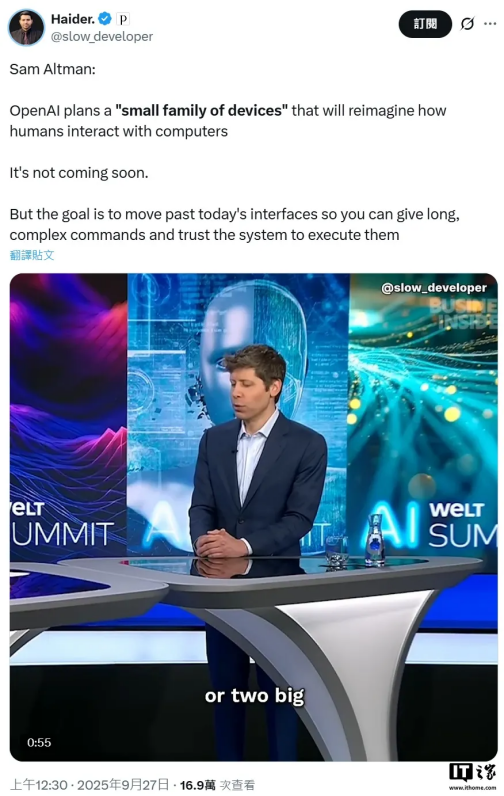
The reasons for venturing into hardware are straightforward:
First, OpenAI is dissatisfied with current profitability and aims to capture more AI-related profits.
Second, existing mobile terminals can no longer satisfy ChatGPT—'a mundane body cannot contain an interesting soul.'
These reasons aren't mutually exclusive. Achieving the next 'Apple Moment' in the tech industry could lay the foundation for accomplishments lasting decades or even longer.
Regarding this, OpenAI seems to have thought it through. They're transforming ChatGPT from a conversational tool into a comprehensive AI application platform, launching Apps SDK (dubbed the 'AI version of iOS framework') that supports developers in building interactive AI apps using TypeScript. Initial partner platforms include seven companies like Coursera and Spotify, with plans to launch an app directory and revenue-sharing mechanism later.
So, what exactly is this AI platform-capable hardware?
Let's speculate boldly. Since smartphones fall short, a new interaction method and data collection capability different from existing mobile terminals are needed.
The two known suppliers—Luxshare Precision and Goertek—are renowned Apple supply chain companies specializing in device assembly and acoustic components, seemingly offering nothing new.
Altman once explained, 'ChatGPT should become users' 'ubiquitous digital companion,' capable of perceiving the environment, understanding user intent, and proactively providing assistance.'
Considering visual, auditory, and even olfactory information collection and user feedback, one might envision a Dyson noise-canceling headphone (a giant mask) + Apple Vision Pro mega-combination.


Surprisingly, these two match well, covering the head to form an AI helmet.
However, this is clearly unrealistic. After all, OpenAI acquired Jony Ive's company—the former design soul of Apple. As a visionary designer, he's unlikely to produce such a mega-contraption and expect it to become the next iPhone.
This time, OpenAI clearly hopes to reshape the entire paradigm through a full-link transformation from hardware to AI platform to supply chain. Such systemic adjustments are rare, making it uncertain whether OpenAI faces immense pressure from investors to take proactive actions. However, one thing is certain: this company, which has once made the world go wild, is plotting another highly anticipated 'cybernetic ascension.'

